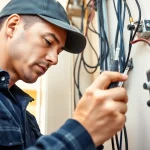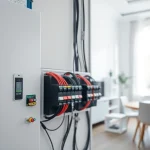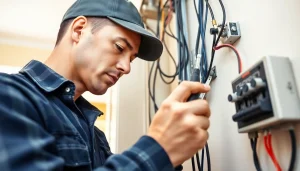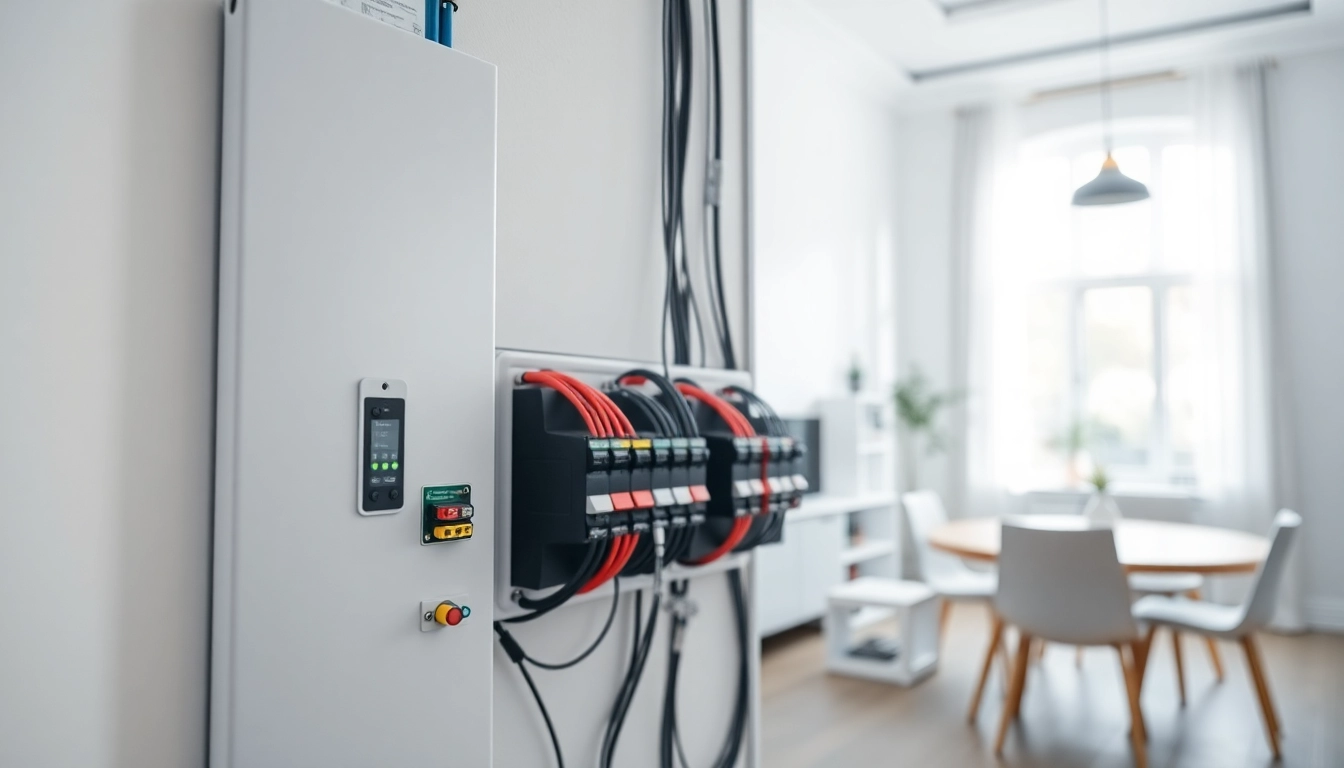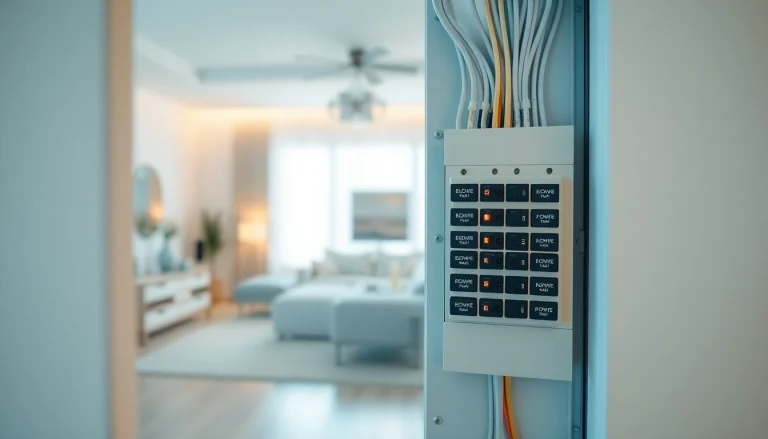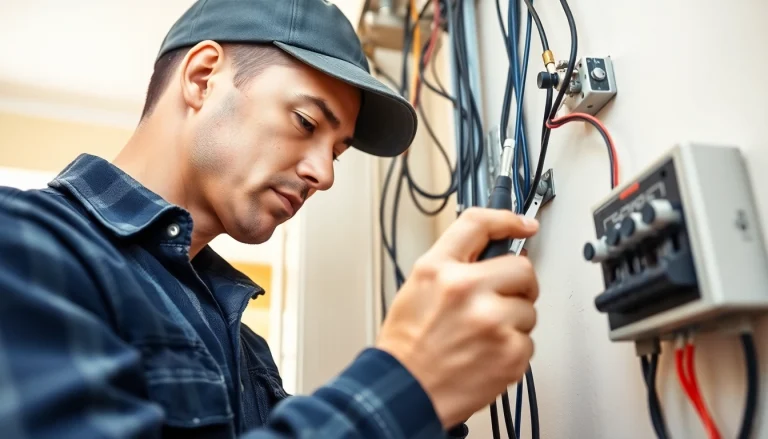Introduction to Electrical Panel
The Electrical Panel serves as the nerve center of any modern home, managing and distributing electrical energy throughout the household. Understanding its significance is essential for homeowners looking to maintain and improve their electrical systems. This comprehensive guide will explore what an electrical panel is, why it is crucial in homes, common terms and components associated with it, and much more.
What is an Electrical Panel?
An electrical panel, often referred to as a breaker box or service panel, is a metal box that houses circuit breakers or fuses. These components manage electricity as it comes into a home from the utility company. The panel functions as a distribution point, directing power to different circuits throughout the home, thus ensuring that electricity is safely and effectively used. Each circuit breaker corresponds to a specific circuit, which controls the flow of electricity to various areas, such as lighting, outlets, and appliances.
Importance of Electrical Panel in Homes
The importance of an electrical panel cannot be overstated. It acts as the bridge between the incoming electrical supply and the circuits that distribute this power to various devices within your home. Moreover, electrical panels ensure safety by interrupting the flow of electricity in case of overloads or faults. This feature significantly reduces the risk of electrical fires and equipment damage.
Beyond safety, a well-functioning electrical panel enhances the efficiency of a home’s electrical system. Older panels may not support modern electrical demands, leading to potential outages or circuit failures. Thus, understanding when and how to upgrade your electrical panel is imperative for both safety and functionality.
Common Terms and Components of Electrical Panels
- Circuit Breakers: These are electromechanical devices that interrupt the flow of electricity when a fault is detected, such as overcurrent or short circuit.
- Fuses: An older technology, fuses protect circuits by melting a wire inside them when too much current flows through, which disconnects the power.
- Main Breaker: This component controls the power supply to the entire panel and can shut off electricity to the entire home.
- Service Entrance: This is where electrical power enters a building from the utility company’s lines.
- Grounding System: Helps prevent electrical shock and protects against surges by redirecting excess electricity to the ground.
When to Upgrade Your Electrical Panel
Deciding when to upgrade your electrical panel can be a daunting task. However, certain indicators can highlight the necessity for a switch. Understanding these signs is crucial for maintaining your electrical system’s health and safety.
Signs That Indicate an Upgrade is Necessary
- Frequent Circuit Breaker Trips: Regularly tripping circuit breakers can indicate that your panel is overloaded and unable to handle the electrical demand.
- Flickering or Dimming Lights: Such symptoms can reveal problems within your electrical panel or circuits.
- Older Panel Models: If your panel is over 20 years old, it may not be equipped to handle modern household electrical needs.
- Burning Smells or Hot Panels: Odors or heat emanating from your panel can indicate potential overload or malfunction, signaling the need for an immediate upgrade.
- Renovations or Additions: If you are adding significant electrical loads to your home through renovations or new appliances, your current panel may not suffice.
Evaluating Your Power Needs
Each home has unique power requirements that evolve over time. To ascertain whether your electrical panel can adequately service your needs, assess your electrical consumption patterns. Consider the following:
- Number of Appliances: Take inventory of all major appliances, electronic devices, and lighting. Higher numbers may necessitate a larger capacity panel.
- Planned Additions: Anticipate your future needs. Are you considering electric vehicles, smart home systems, or significant renovations?
- Current Electrical Usage: If you find yourself frequently adjusting breakers or using less power-intensive appliances, it may be time for an upgrade.
Benefits of a Modern Electrical Panel
An upgraded electrical panel offers numerous advantages, both in terms of safety and efficiency:
- Increased Safety: Modern panels come equipped with enhanced safety features that protect against overload and electrical fires.
- Enhanced Functionality: With added capacity, home electrical systems can accommodate new technologies like smart devices and electric cars.
- Improved Efficiency: Upgraded panels can optimize electrical flow, leading to lower energy bills and reduced waste.
- Higher Property Value: A modern electrical panel can be appealing to prospective buyers, potentially increasing the market value of your home.
Types of Electrical Panels
Understanding the different types of electrical panels available can help you make informed decisions regarding installation or upgrades. Each kind has its unique capabilities, ensuring you select the right one for your home’s demands.
Understanding Different Electrical Panel Types
The two main types of electrical panels are:
- Standard Panels: These panels are often found in homes, utilizing circuit breakers to manage loads effectively. Options vary in ampacity, common ratings include 100 amps, 200 amps, and sometimes 400 amps for larger residences.
- Subpanels: Subpanels are additional panels installed away from the main panel, allowing for better distribution of electricity for specific areas or large appliances.
Choosing the Right Electrical Panel for Your Home
To select the optimal electrical panel, consider the following aspects:
- Home Size: Larger homes typically require higher capacity panels to manage increased electrical loads.
- Electrical Load Assessment: Evaluate your household’s total amperage needs, factoring in variables like appliance use, lighting, and potential upgrades.
- Future Proofing: Opt for a panel that supports upgrades or additions, ensuring longevity as electrical demands evolve.
Comparing Features and Pricing
When it comes to purchasing an electrical panel, price varies widely based on features and capacity. Common features to evaluate include:
- Number of Circuits: More circuits enable you to distribute power more effectively across your home.
- Smart Technology Integration: Some modern panels offer monitoring abilities and advanced technology compatibility.
- Service Capacity: Consider how much amperage you will need now and in the future, as this will significantly affect the overall cost.
Researching and comparing costs associated with purchasing and installing different types of electrical panels can lead to substantial savings and smarter investment in your home’s infrastructure.
Installation Process of Electrical Panel
Installing an electrical panel is a task that should not be taken lightly. This process generally involves several steps, strict safety protocols, and ideally, a licensed electrician.
Preparing for Electrical Panel Installation
Preparation is crucial for successful installation:
- Permits: Check local regulations and obtain necessary building permits required for electrical work.
- Clear Access: Ensure that the area around the old panel is clear of obstructions for easy access.
- Gather Tools: Essential tools include screwdrivers, pliers, wire strippers, and voltage testers.
- Safety Gear: Personal protective equipment including gloves, goggles, and appropriate clothing should be used to mitigate hazards.
Steps Involved in Installing an Electrical Panel
Installing an electrical panel typically involves the following steps:
- Shutting Off Power: Before beginning work, ensure that the main power supply is shut off to avoid electric shock.
- Removing the Old Panel: Carefully disconnect and remove wires connected to the existing panel.
- Mounting the New Panel: Install the new panel securely, following manufacturer guidelines.
- Wiring Connections: Connect circuit breakers, service entrance conductors, and ground wires according to local electrical codes.
- Power Restoration: Once connections are secure, restore power and test the new panel for correct functionality.
Safety Precautions During Installation
Safety cannot be overlooked during installation. Essential precautions include:
- Always work with insulated tools and wear protective gear.
- Regularly test for live wires before handling any electrical connections.
- Ensure work areas are dry and free from hazards to avoid slips or falls that may lead to injuries.
Maintenance and Troubleshooting
Regular maintenance and knowledge of troubleshooting methods can extend the life of your electrical panel and ensure safety in your home.
Routine Maintenance Tips for Electrical Panels
Maintaining your electrical panel should include:
- Visual Inspections: Examine the panel for signs of wear, damage, or overheating.
- Screws and Connections: Tighten any loose connections as they can cause electrical arcing and pose fire risks.
- Keep It Clean: Dust and debris can affect performance; periodically wipe down the outside of the panel.
Common Issues and How to Address Them
Some common electrical panel issues include:
- Tripped Breakers: If breakers frequently trip, assess the load on the circuit or consider an upgrade to your panel.
- Burnt Smells: Investigate any burning smells for underlying electrical issues and call a professional if needed.
- No Power: If the panel fails to deliver power, check for blown fuses or tripped breakers before seeking professional help.
When to Call a Professional for Electrical Panel Problems
If issues persist after taking basic troubleshooting steps, it is advisable to contact a licensed electrician. Conditions that warrant professional intervention include:
- Frequent issues with circuits.
- Visible signs of damage or burning.
- In the event of unexpected power outages that are not linked to external sources.
- Any work on the panel involving modifications or upgrades.
